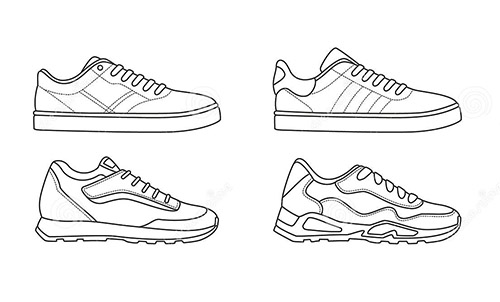
With spring rolling in and summer around the corner, outdoor sports, leagues and exercise are back in full swing. As any sports medicine specialist would tell you, optimizing performance while minimizing injury is paramount, and proper shoe gear plays a major role in both. With that in mind here are some factors to consider before lacing up those shoes.
The width of a shoe can play an important role in sports performance and comfort. Wearing shoes that are too narrow can cause discomfort, blisters, and even injury, while shoes that are too wide can lead to instability and reduced control. Consider these when choosing shoe width for different sports:
1. Running: When choosing running shoes, it is important to have a snug fit without being too tight. Shoes that are too narrow can cause blisters and other foot injuries, while shoes that are too wide can cause the foot to slide around inside the shoe, leading to instability and reduced control.
2. Basketball: In basketball, shoes with a wider base can provide more stability and support during quick changes of direction and jumping. Shoes that are too narrow can increase the risk of ankle injuries and instability.
3. Tennis: Tennis shoes should be snug in the heel and midfoot, but have a slightly wider toe box to allow for lateral movements and quick changes of direction.
4. Soccer: Soccer shoes should fit snugly around the midfoot and have a slightly wider toe box to accommodate for ball control and maneuverability.
A major war in the athletic shoe world is the classic “high-top versus low top.” One of the primary differences between high tops and low tops is the level of ankle support and protection they provide. Here’s a breakdown of how each type of shoe compares in terms of ankle protection for sports:
High Tops
High tops feature a higher collar that extends above the ankle. The design of high tops is intended to provide more support and stability to the ankle during physical activity, especially in sports that require quick changes in direction, such as basketball or tennis. The extra material around the ankle can help prevent ankle sprains and other injuries by limiting the range of motion of the joint. High tops also offer more cushioning and shock absorption than low tops due to the additional padding and thicker soles.
Low Tops
Low tops are athletic shoes that have a lower collar that sits below the ankle bone. This design offers more flexibility and freedom of movement for the ankle, making them ideal for sports that require a lot of running and jumping, such as track and field or soccer. Low tops are generally lighter and more breathable than high tops, which can make them more comfortable to wear for long periods of time. However, they provide less ankle support and protection than high tops, which can increase the risk of ankle injuries, especially in sports where there is a lot of lateral movement and sudden stops and starts.
Overall, it is important to choose shoes that fit well and provide adequate support and stability for the specific sport being played. Trying on shoes and testing them out on the court or field is the best way to ensure a good fit and prevent discomfort or injury.
Even with the right shoe gear, injuries still happen; if so, please don’t hesitate to come in for a thorough evaluation! Contact Elianna Kranz at [email protected] or 2015103777 for an appointment.
Happy Passover!
By David Mandil, DPM, Center for Musculoskeletal Disorders










